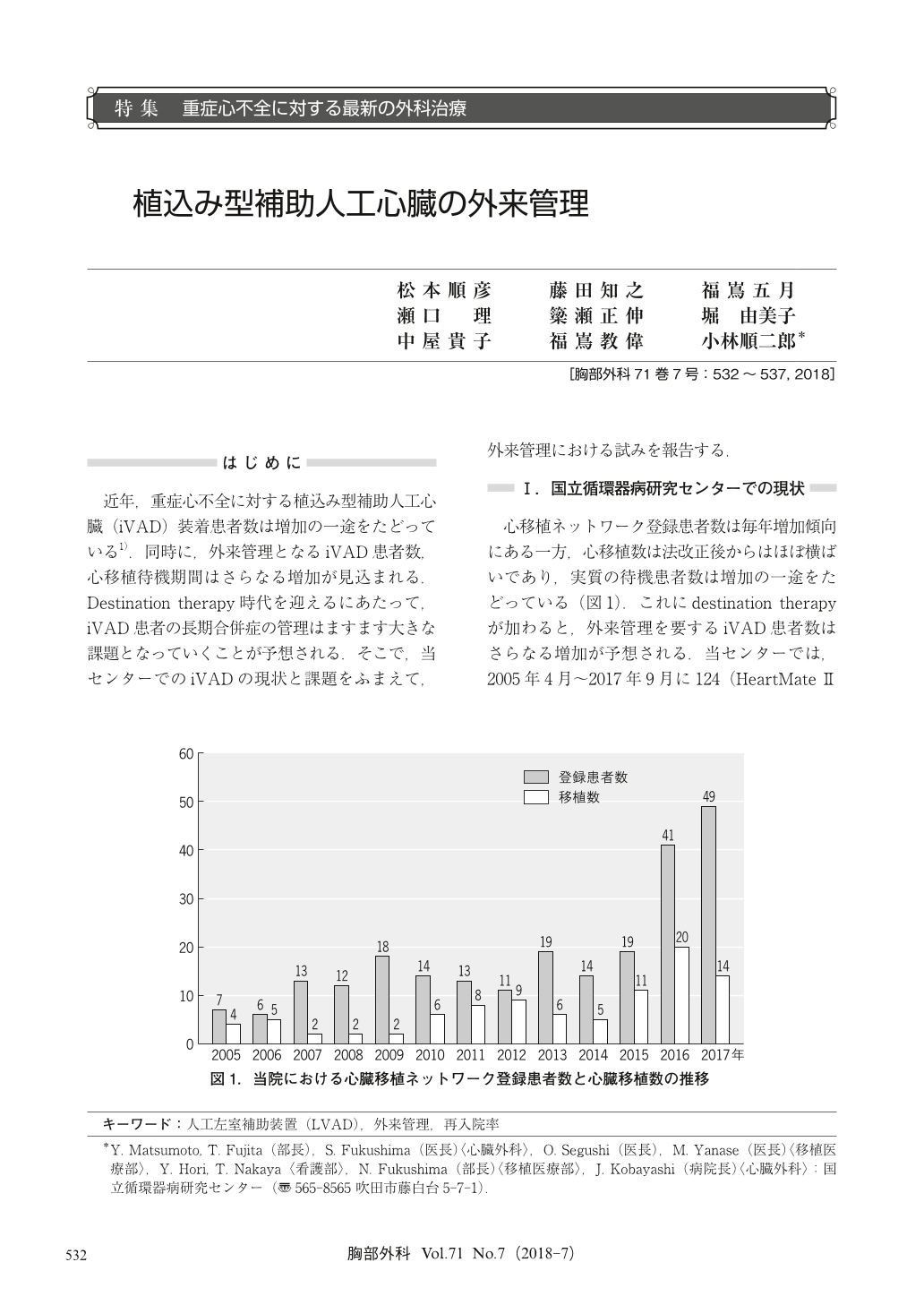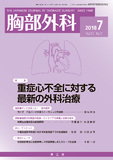Japanese
English
- 有料閲覧
- Abstract 文献概要
- 1ページ目 Look Inside
- 参考文献 Reference
- サイト内被引用 Cited by
近年,重症心不全に対する植込み型補助人工心臓(iVAD)装着患者数は増加の一途をたどっている1).同時に,外来管理となるiVAD患者数,心移植待機期間はさらなる増加が見込まれる.Destination therapy時代を迎えるにあたって,iVAD患者の長期合併症の管理はますます大きな課題となっていくことが予想される.そこで,当センターでのiVADの現状と課題をふまえて,外来管理における試みを報告する.
From 2005, 124 patients have received implantable left ventricular assist device (iVAD) in our institute, including HeartMateⅡ (84), EVAHEART (17), Jarvik2000 (13), DuraHeart (9), HVAD (1). At February 2018, 60 patients were waiting for heart transplant with iVAD support. Multi-specialist team consisted of clinical engineer, VAD management specialist, nurse, transplant coordinator for recipient and physicians provide patients care. Thirty one percents returned to their social activity after iVAD implantation. 73% patients required rehospitalization for more than 1 time. Overall frequency of rehospitalization was 1.43 events per patient-year. Driveline infection was the most frequent reason and tended to repeat, accounted for 41% of overall rehospitalization. To reduce skin trouble around the driveline exit site causing driveline infection, we made a skin care outpatient clinic, cooperating with a certified nurse in wound, ostomy, and continence nursing (WOC). Besides, we utilize smartphones for remote advising system for patients to facilitate early diagnosis and precise care for driveline infection. A self-anticoagulation management device (Coag-check XS personal) enable us to give adequate anticoagulation therapy and to minimize bleeding and thromboembolic event. Additionally, establishment of psychosocial care promote patient’s recovery of social status. With those strategies in outpatient care, we are trying to achieve successful quality of life of iVAD patients.

© Nankodo Co., Ltd., 2018


